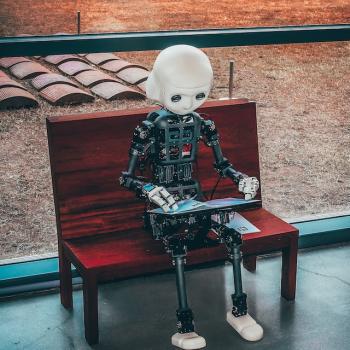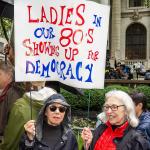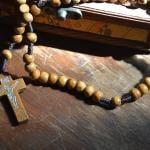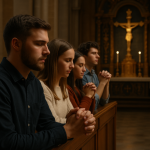Part 2: The Challenges of Individualism
Part 3: The Person, the Other, and the Community in communio Ecclesiology
Affinity and Lifestyle Enclaves
Although American culture is highly individualistic and its emphasis can be quite overpowering, the human tendency toward relationships is still present. Americans across the country still gather in small groups around the country: voluntary associations, country clubs, bowling leagues, church groups, sewing clubs, just to name a few. However, it is necessary to make the distinction between superficial and genuine communities, which Bellah calls lifestyle enclaves and communities of memory, respectively. Bellah notes that lifestyle, as opposed to community, is “fundamentally segmental and celebrates the narcissism of similarity.”[1] Lifestyle enclaves, then, are self-contained groups in which only those with similar tastes and interests gather together. Lifestyle enclaves are sectarian. Due to their heavy reliance on affinity, they tend to create boundaries and fences, where those outside of the group who are dissimilar or different are unwelcomed. They fragment and limit the person, because they offer a narrow view of the world: the only one that is shared in common. Lifestyle enclaves impoverish relationships rather than enrich them. Any attempt on the part of the members to share other skills or values that may contradict or not completely align with the interests of the enclave can be considered a cause for conflict and division. The members of lifestyle enclaves do not enrich one another; they maintain a monologue among each other rather than a dialogue with outsiders. Thus, the search for our selves and for our identity as Christians within the American culture becomes fruitless in these lifestyle enclaves, because these groups do not offer us a window to the world through which we can understand how we fit in it as individuals and as a group. Instead, they are merely a mirror that reflects an image that we have invented or that we have allowed society to create for us.
Lifestyle enclaves thrive and owe their subsistence to the affinity that exists among their members. In California, the mega-church Saddleback Church relies greatly on small groups to make its members feel more of a part of the larger congregation. The small groups are formed through what they call “small-group connection sessions.” In these sessions, “people sit in sections of the hall that correspond to where they live and briefly tell one another about themselves” with a one-minute limit. At the end of the session, people are able to connect with small groups. One of the pastors admits that it is affinity that allows these groups to remain together beyond the curriculums they cover.[2] Whereas Saddleback Church intentionally relies on affinity among members to create and keep these small groups together, the All Saints Episcopal Church in Pasadena intentionally brings dissimilar people together in small groups in order to “reflect its belief in inclusiveness and the essential oneness of all people.”[3] However, the small groups in the All Saints Church do not stay together after finishing their curriculums as often as they do in Saddleback. Hence, as Putnam concludes, “affinity is a more powerful glue than diversity.”[4] It is not diversity that can be blamed for the disbandment of some of the small groups at All Saints once they cover their curriculums. The problem is that diversity cannot exist for its own sake. Diversity needs to be coupled with a common goal that can bring the members together; otherwise, the group is really artificial—it becomes ambiguous and meaningless.[5] In both of these examples, nonetheless, we can see that weak bonds hold these groups together: one is bound by affinity and the other by a superficial diversity.
Individualism provides the proper ground for lifestyle enclaves to exist. Individuals who are mainly concerned with their private lives only relate to those who have matching tastes and interests, because they do not represent a potential cause for disturbance to the fenced life they protect so much. It is no surprise that the individualism—along with the springing up of lifestyle enclaves—that permeates American culture has made some headway into Christianity, as the previous examples show, and even into Catholicism. Increasingly, Catholics are commuting longer distances to the parishes of their choice, because of personal preferences, rather than attending the parish that is closest to them making these parishes are “enclaves of the like minded” that “cease to school us in getting along with others amid disagreement.”[6]
Lifestyle enclaves are fragile, built on sand, where any sign of dissimilarity can be fatal to their survival. In contrast to this approach to forming groups, we need communities with stronger foundations that can help us construct a coherent story of who we are as a people (not as individuals). This way we can form an authentic—not an artificial and superficial—image of ourselves as Christians in the American culture.
Part 5: Communities of Memory
[1] Robert Bellah, et al., Habits of the Heart: Individualism and Commitment in American Life, 3rd ed, (Berkeley, California: University of California Press, 2008), 72.
[2] Robert Putnam and Lewis Feldstein, Better Together: Restoring the American Community (New York: Simon & Schuster, 2003), 130.
[3] Ibid., 136-137.
[4] Ibid., 137.
[5] Members of this church actually boast of the “ambiguity” that exists in their community as being more “than a lot of people can tolerate” elsewhere. For more similar views of the members of this church. See Putnam and Feldstein, Better Together, 140.
[6] Vincent Miller, “Culture of Choice Creating Religious Enclaves,” 3 March 2008, 26 April 2009 <http://newsweek.washingtonpost.com/onfaith/guestvoices/2008/03/culture_of_choice.html>.












